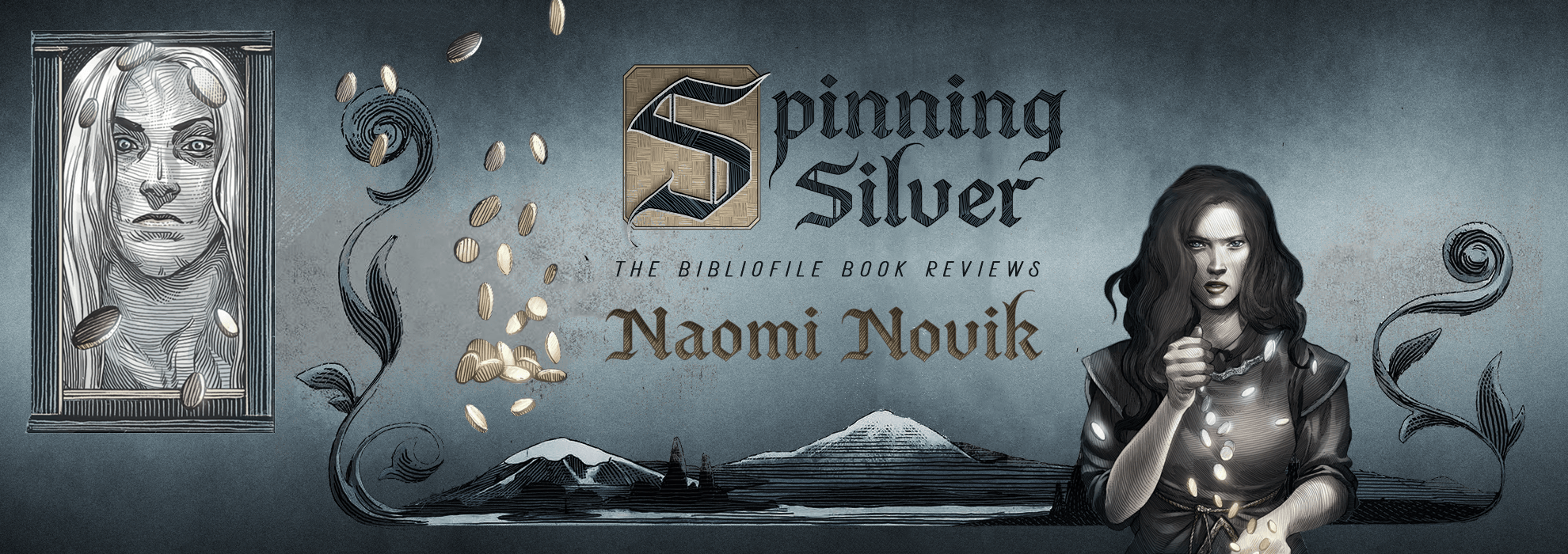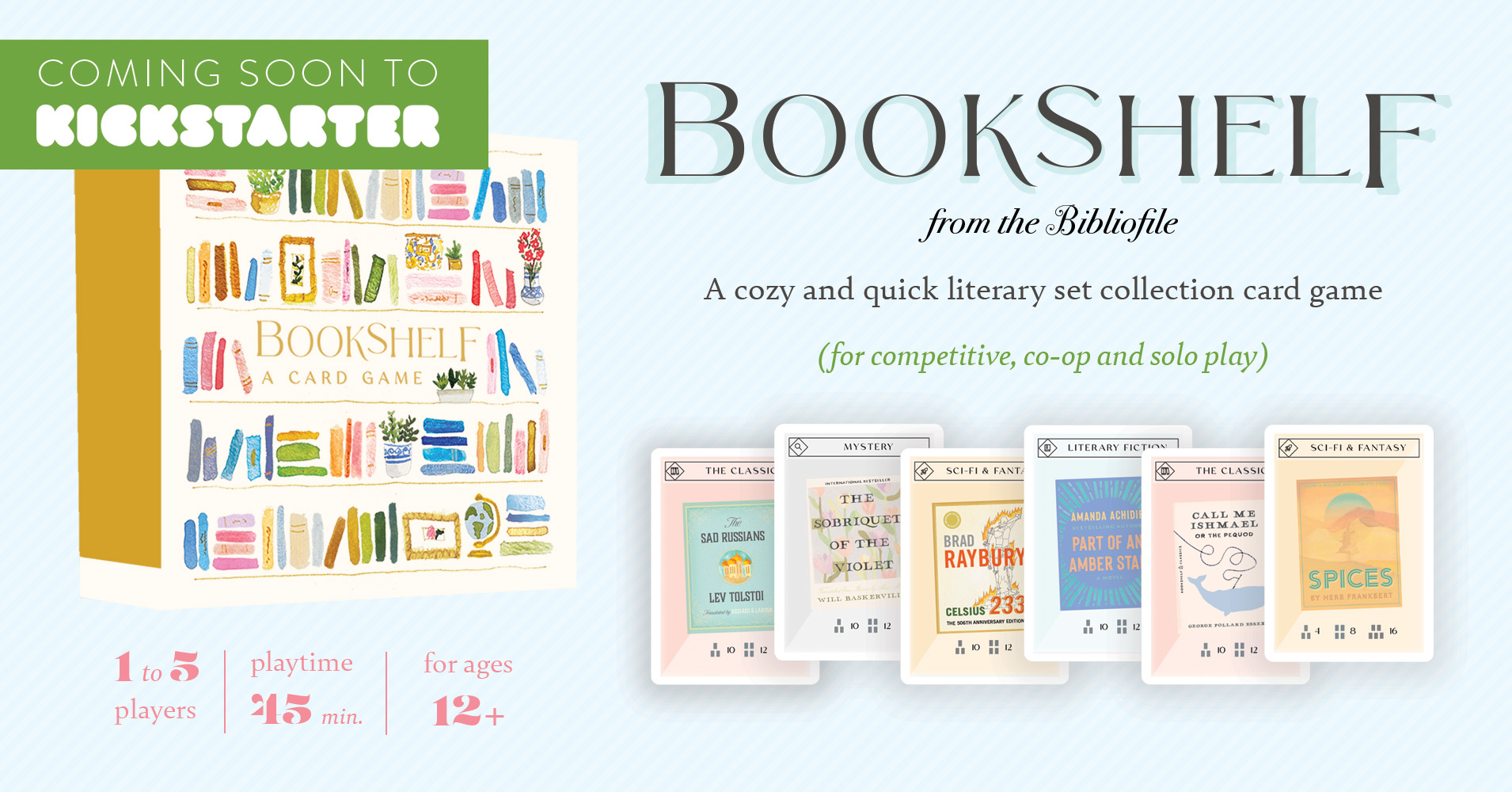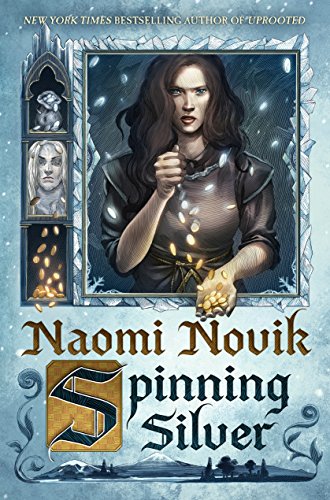Naomi Novik’s newest novel, Spinning Silver, is a loose retelling of the Brother’s Grimm version of Rumplestiltskin — it borrows just enough elements from it to be recognizable while spending most of its time spinning a vivid and original tale.
Plot Summary
Miryem lives in a small town in the kingdom of Lithvas and comes from a family of moneylenders. When her family’s finances come into dire straits, she takes over the moneylending on behalf of her father and finds that she has a knack for it.
Her abilities draw the attention of the marauding Staryk knights, magical beings that emerge from the Kingdom of Ice to hunt gold relentlessly. One day, they bring her a bag of faerie silver with demands that it be changed into gold.
Miryem’s attempts to save herself and her family intertwine with the fates of two others: a local girl named Wanda and the Duke’s daughter, Irina. Wanda has a drunkard for a father and needs to find a way to take care of herself and her younger brothers. Meanwhile, Irina is a girl with some Staryk blood and whose father hopes to marry her off to the handsome but cruel Tzar, Mirnatius.
As the future of the sunlit kingdom and that of Winter and Ice come crashing into each other, these three young women find themselves poised to make decisions that will impact the lives of all living being across both kingdoms.
“But I had not known that I was strong enough to do any of those things until they were over and I had done them. I had to do the work first, not knowing.”
Uprooted vs. Spinning Silver
I read Novik’s previous novel, Uprooted, not too long ago, and I have to say that I liked this one more, though I’m guessing opinions will be divided. In Uprooted, the main story is the romance and the whole book is built around it, so if the romantic angle is what interests you, you’ll probably like that book more.
Spinning Silver, on the other hand, definitely has romantic subplots, but attempts to cover more substantive themes — it dives into the ideas of responsibility, family and debts — as well. It does mean, however, that the romantic relationships, while still present, give way to somewhat more somber material for large swaths of the book.
In terms of world-building, I’d say they are approximately equally strong. The world in Uprooted is so vivid and unique, but was somewhat less coherent. In Spinning Silver, the world is more coherent and fleshed out, though I think it didn’t quite capture my imagination as much as the magic of the tree people and the encroaching forests of Uprooted.
Book Review
Novik’s strength lies in conjuring up imaginative and distinct worlds with their unique mechanisms and rules that give them shape and character. In Spinning Silver, she complements her world with a cast of three young women, each of whom is faced with difficult circumstances and various challenges to overcome. Despite existing in a world with structural barriers designed to deprive women of power, they have agency and ultimately hold their fates in their own hands.
There is definitely more of an emphasis on more substantive themes compared to Uprooted, and I appreciated its forays into exploring the responsibilities one has to others and the courage and strength of its protagonists. Still, overall I still found that this book had some YA-type characteristics. The overly “neat” ending and the framing of the romantic story lines felt more appropriate for a younger reader.
And while it was an improvement over Uprooted, I still don’t like Novik’s romances. Prickly, morally-ambiguous men are just not my thing, even if they are tall and handsome. (And a note to any young girls out there: despite what stories like this might indicate, the guys you want to be with are the ones that treat you well from the start.)
Read it or Skip it?
Spinning Silver is a compelling and fantastical tale, and it’s a pleasure to explore Novik’s imaginative worlds and fairytale kingdoms. It proceeds with a strong sense of empowerment and adventure, and it tells a coherent and thematically consistent story about family and duty and responsibility.
While this is probably more appropriate for YA readers, even if it isn’t being marketed as such, it is also worth considering for more general audiences who just like fairytale-type stories as well.




I loved Uprooted! So excited for this one! Great review.
thank you! hope you like it!
This is on my TBR but I am a bit surprised they published it in the middle of summer!!! It’s completely a winter-y book (I am waiting for winter to read it!)
Oh, I didn’t even think about that — that’s a good point. I think it’s probably enjoyable in any season :) but yes it would be a good Wintertime release for sure!
Nice review, I’m put in on my TBR !
thank you! I hope you like it!
I loved Uprooted too and I’m quite excited about this book but to be honest I didn’t feel like in Uprooted the romance was a main thread. For me it was the least important part of the book. But anyway I loved Naomi Novik style she reminds me so much of Ursula LeGuinn and I can’t wait for Spinning Silver!
Thanks for your thoughts! Perhaps I overstated it, but I meant more that the relationship between the protagonist and the dragon (which is what I was referring to by saying the “romance”) is more central to the story compared to this book. I’d say in this one the protagonists relationship with their family and to themselves definitely has more of a focus. Either way, if you like her style, I’m sure you’ll like this one! Happy reading!
I enjoyed uprooted and from your review it sound like I should add Spinning Silver to my reading list.
Yay, glad to hear it! Hope you like it! :)
Great review, Jennifer.
Thank you!
I liked Uprooted but didn’t love it in the way that some people do. I will definitely give this a try – I really want to love Novik’s novels so hopefully this will do it for me!
Yeah, I think I felt the same way about Uprooted — there were elements to it that I really responded to and some that I wasn’t a fan of; I ended up liking Spinning Silver more, so hope you end up enjoying it! :)
I believe this is a title I will read. I like the WordPress theme you have chosen.
Hope you like it, Suzie! This is actually a custom theme I coded, but thank you!
I can’t wait to read this!
Hope you like it! :)
I loved Uprooted—I’ll have to give this a go!
Glad to hear it, and yes, Uprooted was such a delightful book! Thanks for dropping by!
This sounds like something my teen daughter would like to read. She loves folklore with all sorts of twists. Great review!
Thank you, and yes, I’d totally recommend this for a teen girl — the depictions of the three main characters in it are great (I would mention that two of the characters end up in relationships with sort of prickly guys who are not nice to them at first, which I don’t love as a message to send to young women. So it might be worth mentioning to her that it’s not a great idea to romanticize jerks to save her some heartache!)
Seeing a young person like you reading lots of books give me hope for the future. You provide a good quick description of the book and the best audience for it. You might like Holy Fools by Joanna Harris, which is an historical novel with interesting religious overtones. She world-builds 1610 quite well. All best wishes to you and yours.
Hi Larry, thank you for the thoughtful message and the book recommendation! I will definitely look into it! :)
I really need to read this soon. I was so looking forward to the release and yet I have so many new books I want to read them all. lol
haha yeah my TBR is ever-growing as well. this book is fun though, hope you’ll get a chance to read it soon!
This is the one book I’ve been excited to read all year! I’m just waiting for it to come out in Trade so it will match my copy of Uprooted. ;)